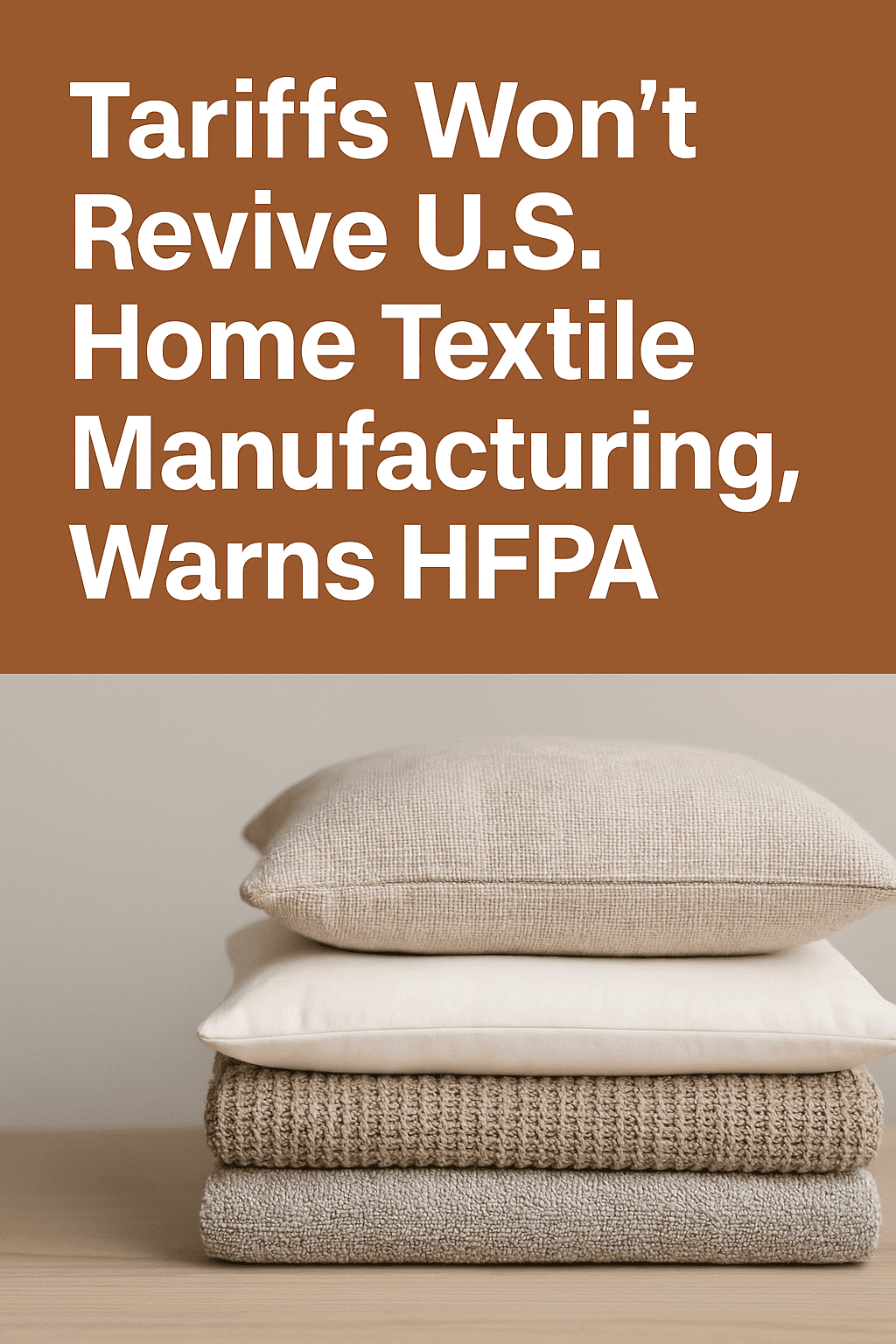Tariffs Won’t Revive U.S. Home Textile Manufacturing, Warns HFPA
New York – In response to the sweeping tariff measures introduced earlier today, the Home Fashion Products Association (HFPA) has released a clear and cautionary message regarding their impact on the home textiles industry.
While expressing support for the broader intent of protecting the nation’s economic and security priorities, HFPA emphasized that imposing additional tariffs on home textile goods is unlikely to help achieve these goals. Instead, the association warned that such moves would place added financial strain on American consumers and businesses already navigating economic uncertainty.
“Home textile products are everyday essentials, not strategic imports,” said Charles Gaenslen, HFPA board president and CEO of Loftex Home USA. “They bear no connection to national security or America’s long-term competitive edge, yet they’re being subjected to harsh and increasingly unsustainable duties.”
With tariffs already in place under Section 301, the newly announced rates—which include a cumulative 54% on Chinese imports, 26% on goods from India, 29% on products from Pakistan, and 46% on Vietnamese shipments—will sharply increase consumer prices. Gaenslen emphasized that this could further squeeze household budgets and create serious challenges for retailers managing inventory and margins.
According to HFPA, the U.S. currently lacks the domestic manufacturing infrastructure needed to meet demand for home textile products at scale. “Tariffs won’t spur the return of large-scale manufacturing in the U.S.,” Gaenslen stated. “What they will do is increase costs across the board, reduce investments in labor, and force companies to shift operations to alternative sourcing destinations—not the United States.”
Additionally, American manufacturers who rely on imported raw materials may find themselves at a disadvantage as input costs rise, making it harder to remain competitive globally. In a time when affordability and economic resilience are critical, HFPA cautions that these tariff policies could deliver more harm than benefit.

